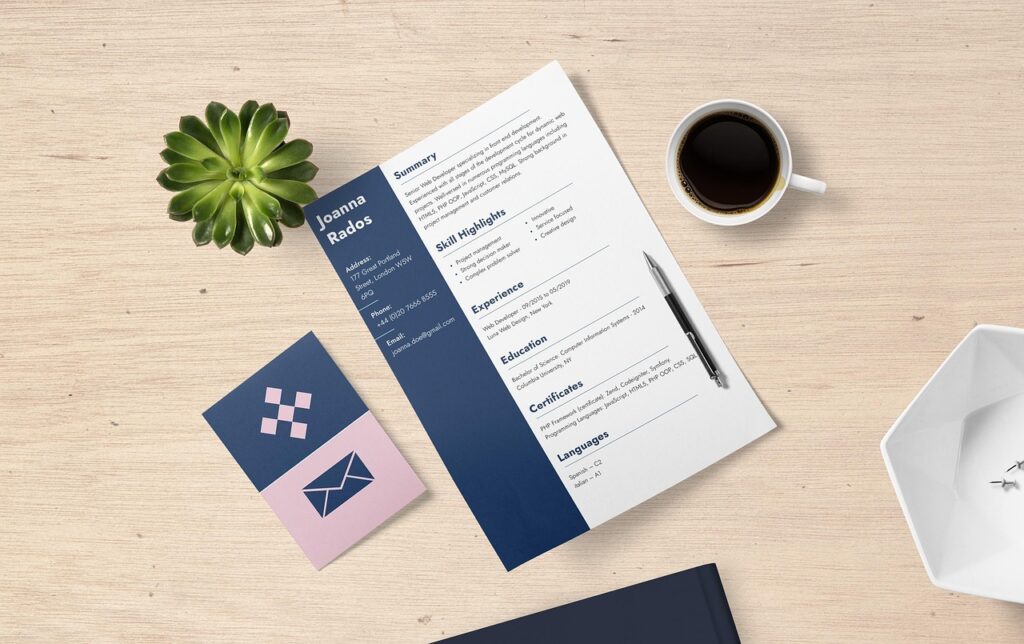How to Write a CV With No Experience – Step-by-Step Guide

Table of Contents
Creating a CV can feel like a daunting task, especially when you’re just entering the job market or transitioning to a new field. You might find yourself grappling with the question: How do you market yourself effectively without any substantial work history? In this comprehensive step-by-step guide, we will walk you through crafting a standout CV with no experience, equipping you with the skills to present your strengths, skills, and potential to future employers.
Understanding the Importance of a CV

Your CV, or Curriculum Vitae, is more than just a collection of your past experiences; it’s your marketing tool. It’s your first opportunity to make a lasting impression on potential employers. While many job seekers feel pressure to have extensive work experience, it’s crucial to understand that employers also value skills, potential, and a willingness to learn. A well-crafted CV can effectively bridge the gap for those lacking traditional experience.
Gather Your Basic Information
Before diving into layout and design, gather all your essential information. Here’s what you should prepare:
- Contact Information: Your name, phone number, email address, and LinkedIn profile (if applicable).
- Education Details: School names, degrees earned, and graduation dates. If you’re still studying, include your expected graduation date.
- Skills: Compile a list of relevant skills that relate to the positions you’re applying for.
Choose the Right Format for Your CV
Selecting the correct format is essential for presenting your skills and experiences effectively. Here are three common CV formats:
Chronological CV: Lists your most recent experiences at the top, followed by your earlier experiences. Best for those with consistent work history.
Functional CV: Focuses on skills and experiences rather than work history. It’s ideal for those with limited experience or making a career change.
Combination CV: Merges elements of both chronological and functional formats. It allows you to highlight skills while also providing a timeline of your work history.
Recommended Format for No Experience
For those crafting a CV with no experience, the functional CV is highly recommended. This format emphasizes your skills and abilities rather than your past job titles.
Write a Compelling CV Summary
Your CV summary (or objective statement) is a brief introduction that captures your main qualifications and career goals. Here’s how to write one that resonates:
Be Specific: Tailor your summary for each job application. Mention the role you’re applying for and the skills that make you a good fit.
Highlight Transferable Skills: If you lack direct experience, mention skills gained from academic projects, volunteer work, or other relevant activities.
Example Summary:
“Enthusiastic marketing graduate with strong communication skills and a passion for digital marketing. Proven ability to manage social media campaigns and create engaging content through various internships and freelance projects. Eager to apply creativity and analytical skills to contribute to [Company Name].”
Showcase Relevant Skills
When crafting a CV with no experience, focusing on your skills is crucial. Identify both hard and soft skills that relate to the job description. Use bullet points to list them clearly, and don’t hesitate to get specific about how you’ve acquired these skills.
Examples of Skills to Include
Technical Skills: Knowledge of software applications, programming languages, or analytical tools.
Soft Skills: Communication, teamwork, problem-solving, and adaptability.
Tips for Listing Skills
Match Skills to Job Description: Always align your skills with what the employer seeks. Use the job posting as a guide.
Be Honest: Only include skills you can confidently demonstrate.
Include Educational Background
As someone crafting a CV with no experience, your education holds significant weight. Clearly outline your academic background, including:
- Degree(s) earned
- Institutions attended
- Graduation dates
- Relevant coursework or projects
Example Education Section
Bachelor of Arts in Marketing
XYZ University, Anytown, USA | May 2023
- Relevant Coursework: Digital Marketing Strategies, Consumer Behavior, Brand Management
- Projects: Developed a marketing campaign that increased local business awareness by 30%.
Highlight Volunteer Experience and Internships

If you lack formal employment experience, don’t overlook volunteer work or internships. These experiences can be incredibly valuable and relevant to potential employers.
How to List Volunteer Experience
Title: Clearly state your role (e.g., Volunteer Coordinator).
Organization: Include the name of the organization and the dates of involvement.
Achievements: Use bullet points to describe your contributions and any skills acquired.
Example Volunteer Experience Section:
Volunteer Coordinator
Local Non-Profit Organization, Anytown, USA | Jan 2022 – Present
- Coordinated events that raised over $5,000 for community projects, enhancing organizational visibility.
- Developed promotional materials, improving volunteer recruitment efforts by 25%.
Use Action Verbs for Impact
To make your CV more dynamic and engaging, start bullet points with strong action verbs. These words can create a sense of achievement and initiative. Here are some powerful verbs to consider:
- Analyzed
- Created
- Implemented
- Assisted
- Designed
- Developed
For instance, instead of saying “Helped create social media posts,” say “Created engaging social media content that increased user interaction by 20%.”
Include Additional Sections
As you craft your CV, consider adding other relevant sections:
Certifications: If you’ve taken courses relevant to the job (e.g., Google Analytics, Project Management), include these to showcase your commitment to learning.
Languages: If you speak multiple languages, this can be highly attractive to employers in diverse environments.
Interests: While optional, including interests can humanize your CV. Focus on interests that indicate valuable skills or align with the job role.
Formatting Your CV
Your CV should not only be informative but also visually appealing and easy to read. Here are some formatting tips:
Font Choice: Use professional fonts like Arial, Calibri, or Times New Roman in a size between 10-12 points.
Clear Sections: Ensure each section is well-defined with bold headings for easy navigation.
Length: Aim for a one-page CV unless you have an extensive list of qualifications and experiences that justify a longer format.
Conclude with a Strong Closing Statement
End your CV with a strong closing statement that reiterates your enthusiasm for the position. This can be a sentence about your eagerness to bring your skills and dedication to the company.
Final Checklist Before Submission
- Ensure all contact information is up-to-date.
- Review for spelling and grammatical errors.
- Tailor your CV for every job application by adjusting relevant sections and keywords.
Conclusion
Crafting a CV with no experience may feel overwhelming at first, but with a focused approach and a highlight of your skills, education, and potential, you can create a compelling document that stands out to employers. Remember that your CV is a reflection of your professional identity; ensure it fully represents you and your aspirations.
Have you recently applied for jobs using your CV? Share your experiences or any additional tips you’ve found helpful in the comments below! Additionally, if you’re interested in more career advice, consider checking out our other articles on resume writing and interview preparation. Your career journey is just beginning—make it count!



